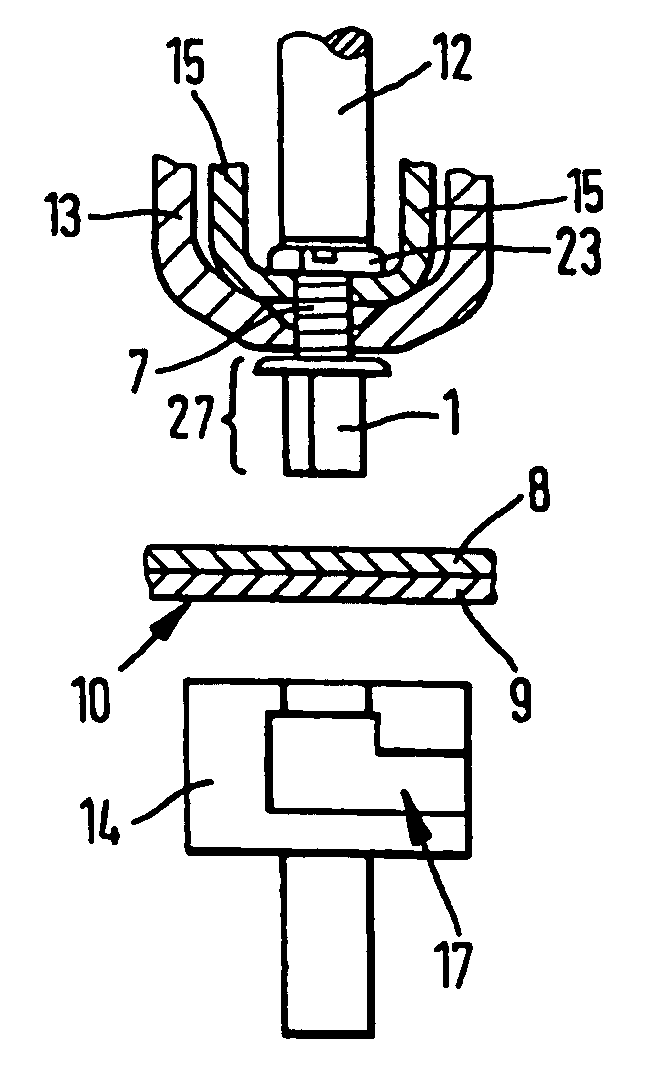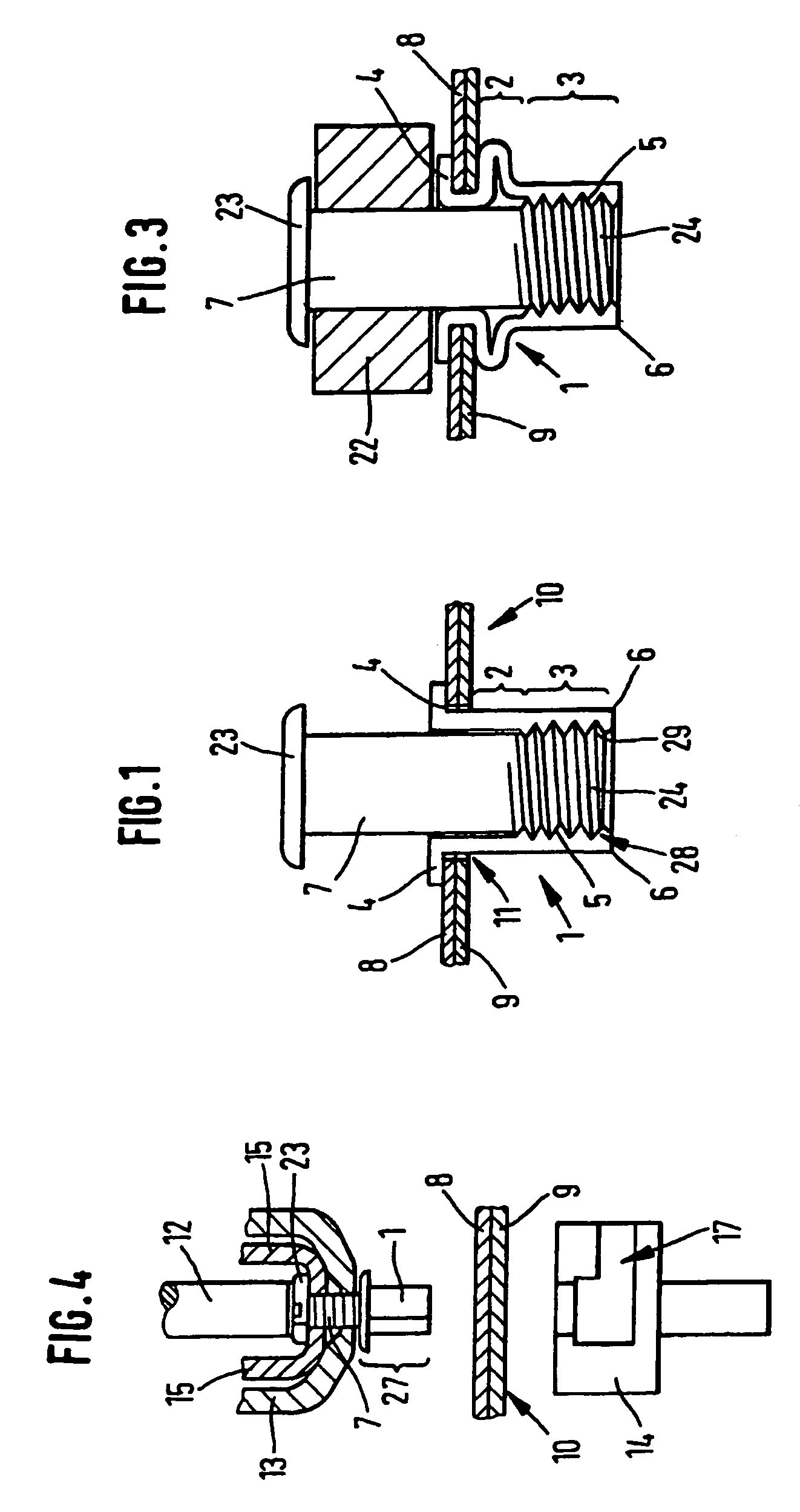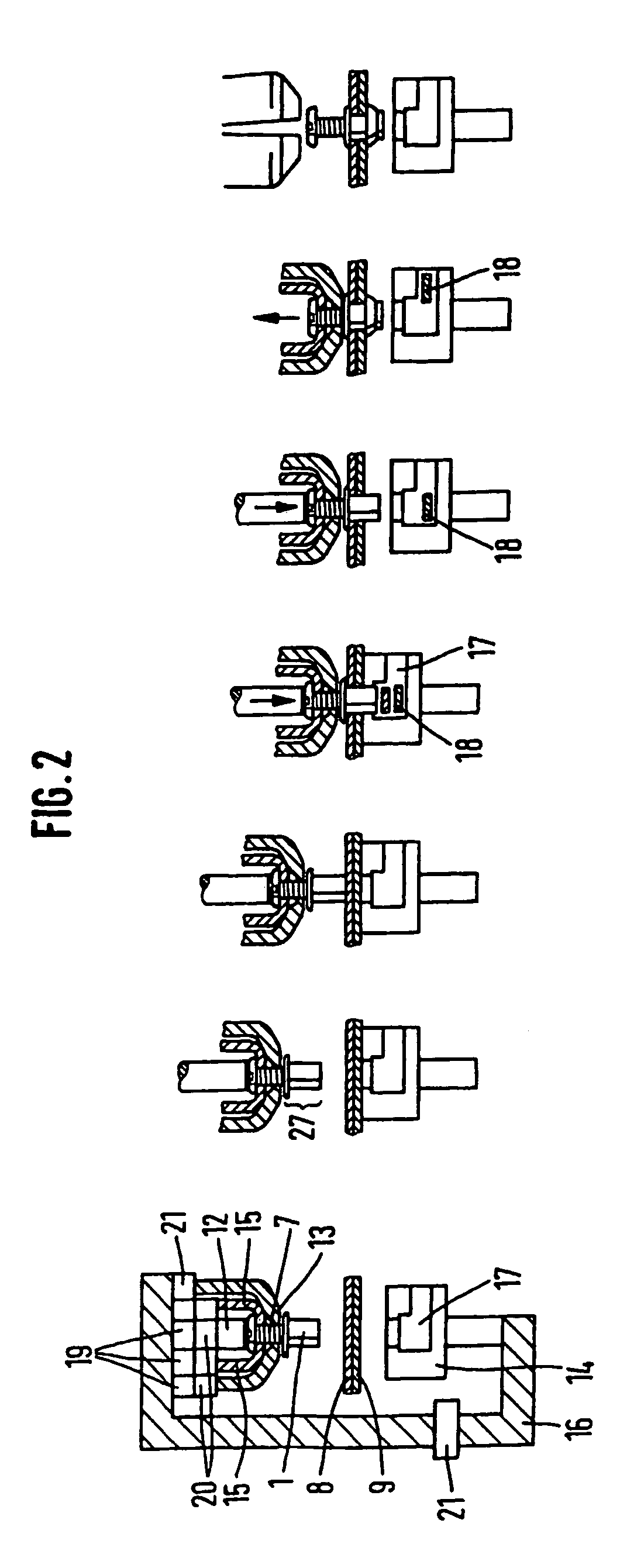Self-piercing rivet, process and device for setting a rivet element, and employment thereof
a self-piercing rivet and rivet element technology, applied in the direction of threaded fasteners, screwdrivers, manufacturing tools, etc., can solve the problems of inability to create self-piercing blind rivets, inability to pierce blind rivets, so as to prevent lateral displacement of the segment, and facilitate the opening of the die
- Summary
- Abstract
- Description
- Claims
- Application Information
AI Technical Summary
Benefits of technology
Problems solved by technology
Method used
Image
Examples
Embodiment Construction
[0075]FIG. 1 shows a fastening element 1 according to the invention, having a setting head 4, a deformation segment 2 and a shaft end 3 with an internal thread 5 and a punching edge 6, hollow, into which a mandrel 7 having a head 23 and a foot 24 is screwed. The tension-resistant connection between the mandrel 7 and the shank 27 is made by means of a connecting segment 28. The connecting segment 28 is made up of an internal thread 5 in the shank 27. The internal thread 5 is screwed onto an external thread 29 on the mandrel 7. The fastening element 1 is punched through a first part 8 and a second part 9, the two parts 8, 9 having the aspect of sheets lying one upon another. The fastening element 1 punches its own hole 11 through the parts 8, 9. The shank end 3 and part of the deformable segment 2 are located in the rear 10 of the second part 9. The deformation segment 2 has a thin wall thickness compared to the shank end 3. The mandrel 7 includes a head 23, to which firstly accessori...
PUM
| Property | Measurement | Unit |
|---|---|---|
| Fraction | aaaaa | aaaaa |
| Distance | aaaaa | aaaaa |
| Distance | aaaaa | aaaaa |
Abstract
Description
Claims
Application Information
 Login to View More
Login to View More - R&D
- Intellectual Property
- Life Sciences
- Materials
- Tech Scout
- Unparalleled Data Quality
- Higher Quality Content
- 60% Fewer Hallucinations
Browse by: Latest US Patents, China's latest patents, Technical Efficacy Thesaurus, Application Domain, Technology Topic, Popular Technical Reports.
© 2025 PatSnap. All rights reserved.Legal|Privacy policy|Modern Slavery Act Transparency Statement|Sitemap|About US| Contact US: help@patsnap.com



